�
The Art of Doing Science and Engineering
The Art of Doing Science and
Engineering
Learning to Learn
Richard W.Hamming
U.S. Naval Postgraduate School
Monterey, California
GORDON AND BREACH SCIENCE PUBLISHERS
Australia • Canada • China • France • Germany • India •
Japan • Luxembourg • Malaysia • The Netherlands •
Russia • Singapore • Switzerland • Thailand •
United Kingdom
�
This edition published in the Taylor & Francis e-Library, 2005.
“To purchase your own copy of this or any of Taylor & Francis or Routledge’s collection of thousands of eBooks please go to
www.eBookstore.tandf.co.uk.”
Copyright © 1997 OPA (Overseas Publishers Association)
Amsterdam B.V.Published in The Netherlands under license
by Gordon and Breach Science Publishers.
All rights reserved.
No part of this book may be reproduced or utilized in any
form or by any means, electronic or mechanical, including
photocopying and recording, or by any information storage
or retrieval system, without permission in writing from the
publisher. Printed in India.
Amsteldijk 166
1st Floor
1079 LH Amsterdam
The Netherlands
British Library Cataloguing in Publication Data
Hamming, R.W. (Richard Wesley), 1915–
The art of doing science and engineering: learning to
1. Science 2. Engineering
learn
I. Title
500
ISBN 0-203-45071-X Master e-book ISBN
ISBN 0-203-45913-X (Adobe eReader Format)
ISBN 90-5699-501-4 (Print Edition)
�
CONTENTS
Preface
Introduction
n-Dimensional Space
Information Theory
Foundations of the Digital (Discrete) Revolution
1 Orientation
2
3 History of Computer—Hardware
4 History of Computer—Software
5 History of Computer Applications
6 Limits of Computer Applications—AI—I
7 Limits of Computer Applications—AI—II
8 Limits of Computer Applications—AI—III
9
10 Coding Theory—I
11 Coding Theory—II
12 Error Correcting Codes
13
14 Digital Filters—I
15 Digital Filters—II
16 Digital Filters—III
17 Digital Filters—IV
18
19
20
21
22 Computer Aided Instruction—CAI
Simulation—I
Simulation—II
Simulation—III
Fiber Optics
vi
viii
1
9
17
24
33
40
47
55
57
67
74
81
89
97
107
115
123
128
135
141
151
157
�
23 Mathematics
24 Quantum Mechanics
25 Creativity
26 Experts
27 Unreliable Data
28
29 You Get What You Measure
30 You and Your Research
Systems Engineering
Index
v
163
171
176
181
187
195
202
209
216
�
PREFACE
After many years of pressure and encouragement from friends, I decided to write up the graduate course in
engineering I teach at the U.S.Naval Postgraduate School in Monterey, California. At first I concentrated on
all the details I thought should be tightened up, rather than leave the material as a series of somewhat
disconnected lectures. In class the lectures often followed the interests of the students, and many of the later
lectures were suggested topics in which they expressed an interest Also, the lectures changed from year to
year as various areas developed. Since engineering depends so heavily these days on the corresponding
sciences, I often use the terms interchangeably.
After more thought I decided that since I was trying to teach “style” of thinking in science and
engineering, and “style” is an art, I should therefore copy the methods of teaching used for the other arts—
once the fundamentals have been learned. How to be a great painter cannot be taught in words; one learns
by trying many different approaches that seem to surround the subject. Art teachers usually let the advanced
student paint, and then make suggestions on how they would have done it, or what might also be tried, more
or less as the points arise in the student’s head—which is where the learning is supposed to occur! In this
series of lectures I try to communicate to students what cannot be said in words—the essence of style in
science and engineering. I have adopted a loose organization with some repetition since this often occurs in
the lectures. There are, therefore, digressions and stories—with some told in two different places—all in the
somewhat rambling, informal style typical of lectures.
I have used the “story” approach, often emphasizing the initial part of the discovery, because I firmly
believe in Pasteur’s remark, “Luck favors the prepared mind.” In this way I can illustrate how the
individual’s preparation before encountering the problem can often lead to recognition, formulation, and
solution. Great results in science and engineering are “bunched” in the same person too often for success to
be a matter of random luck.
Teachers should prepare the student for the student’s future, not for the teacher’s past. Most teachers
rarely discuss the important topic of the future of their field, and when this is pointed out they usually reply:
“No one can know the future.” It seems to me the difficulty of knowing the future does not absolve the
teacher from seriously trying to help the student to be ready for it when it comes. It is obvious the
experience of an individual is not necessarily that of a class of individuals; therefore, any one person’s
projection into the future is apt to be somewhat personal and will not be universally accepted. This does not
justify reverting to impersonal surveys and losing the impact of the personal story.
Since my classes are almost all carefully selected navy, marine, army, air force, and coast guard students
with very few civilians, and, interestingly enough, about 15% very highly selected foreign military, the
students face a highly technical future—hence the importance of preparing them for their future and not just
our past.
�
vii
The year 2020 seems a convenient date to center the preparation for their future—a sort of 20/20
foresight, as it were. As graduate students working toward a master’s degree, they have the basics well in
hand. That leaves me the task of adding “style” to their education, which in practice is usually the difference
between an average person and a great one. The school has allowed me great latitude in trying to teach a
completely non-technical course; this course “complements” the more technical ones. As a result, my
opening words, occasionally repeated, are: “There is really no technical content in the course, though I will,
of course, refer to a great deal of it, and hopefully it will generally be a good review of the fundamentals of
what you have learned. Do not think it is the content of the course—it is only illustrative material. Style of
thinking is the center of the course.”
The subtitle of this book, Learning to Learn, is the main solution I offer to help students cope with the
rapid changes they will have to endure in their fields. The course centers around how to look at and think
about knowledge, and it supplies some historical perspectives that might be useful.
This course is mainly personal experiences I have had and digested, at least to some extent. Naturally one
tends to remember one’s successes and forget lesser events, but I recount a number of my spectacular
failures as clear examples of what to avoid. I have found that the personal story is far, far more effective
than the impersonal one; hence there is necessarily an aura of “bragging” in the book that is unavoidable.
Let me repeat what I earlier indicated. Apparently an “art”— which almost by definition cannot be put
into words—is probably best communicated by approaching it from many sides and doing so repeatedly,
hoping thereby students will finally master enough of the art, or if you wish, style, to significantly increase
their future contributions to society. A totally different description of the course is: it covers all kinds of
things that could not find their proper place in the standard curriculum.
The casual reader should not be put off by the mathematics; it is only “window dressing” used to
illustrate and connect up with earlier learned material. Usually the underlying ideas can be grasped from the
words alone.
It is customary to thank various people and institutions for help in producing a book. Thanks obviously
go to AT&T Bell Laboratories, Murray Hill, New Jersey, and to the U.S.Naval Postgraduate School,
especially the Department of Electrical and Computer Engineering, for making this book possible.
�
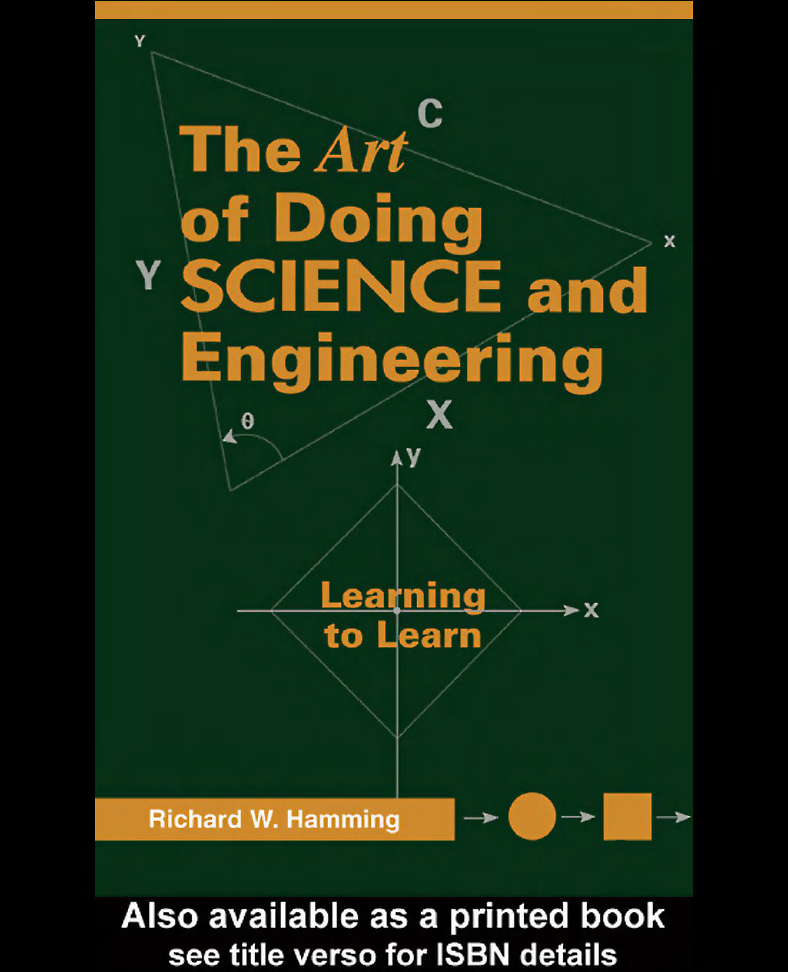
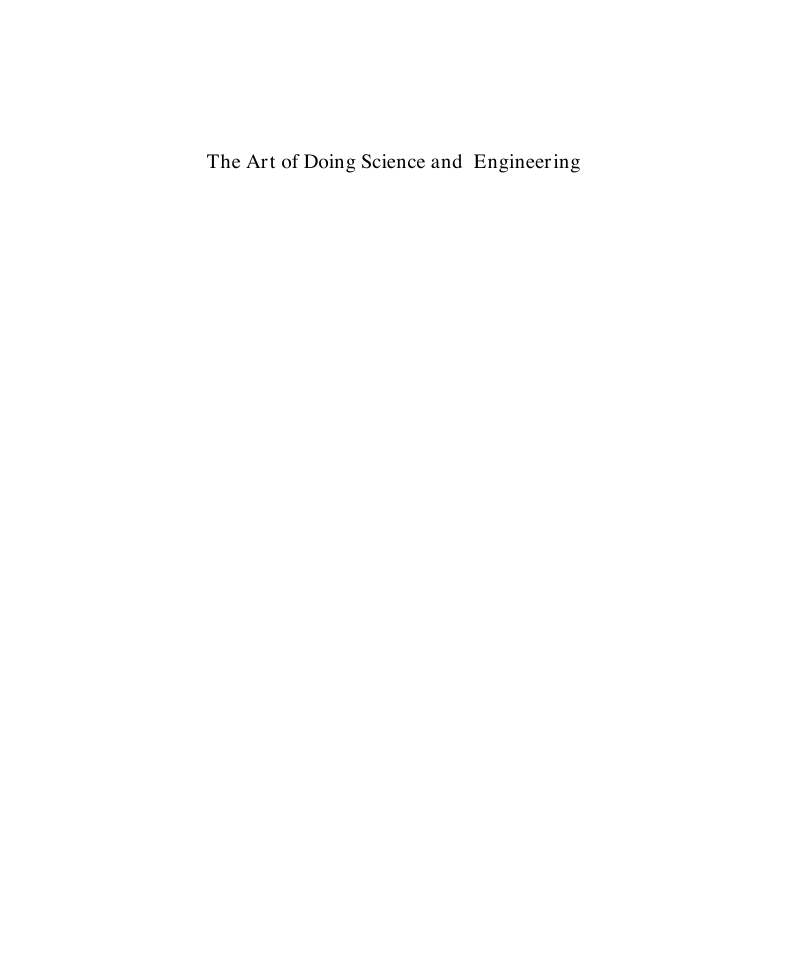
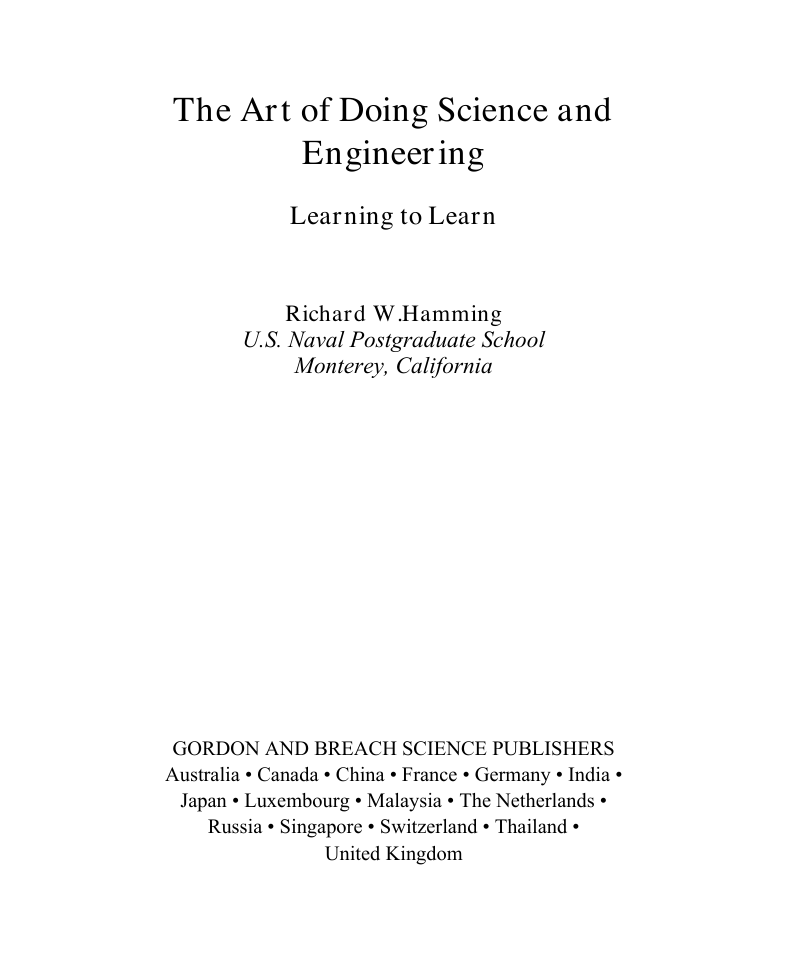
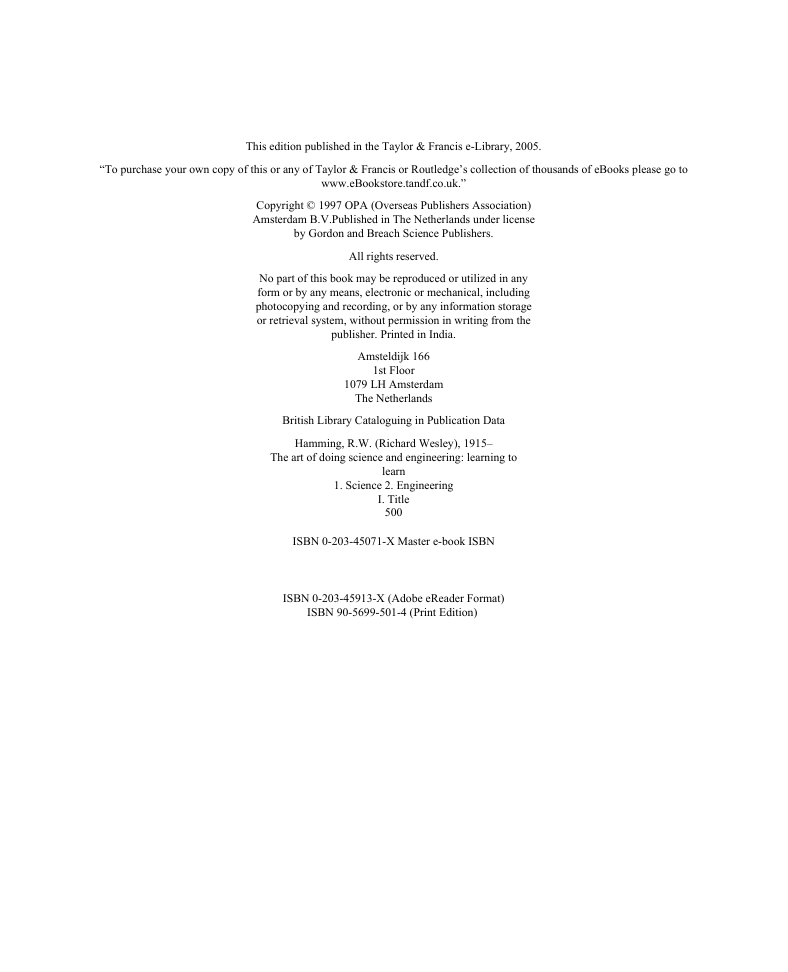
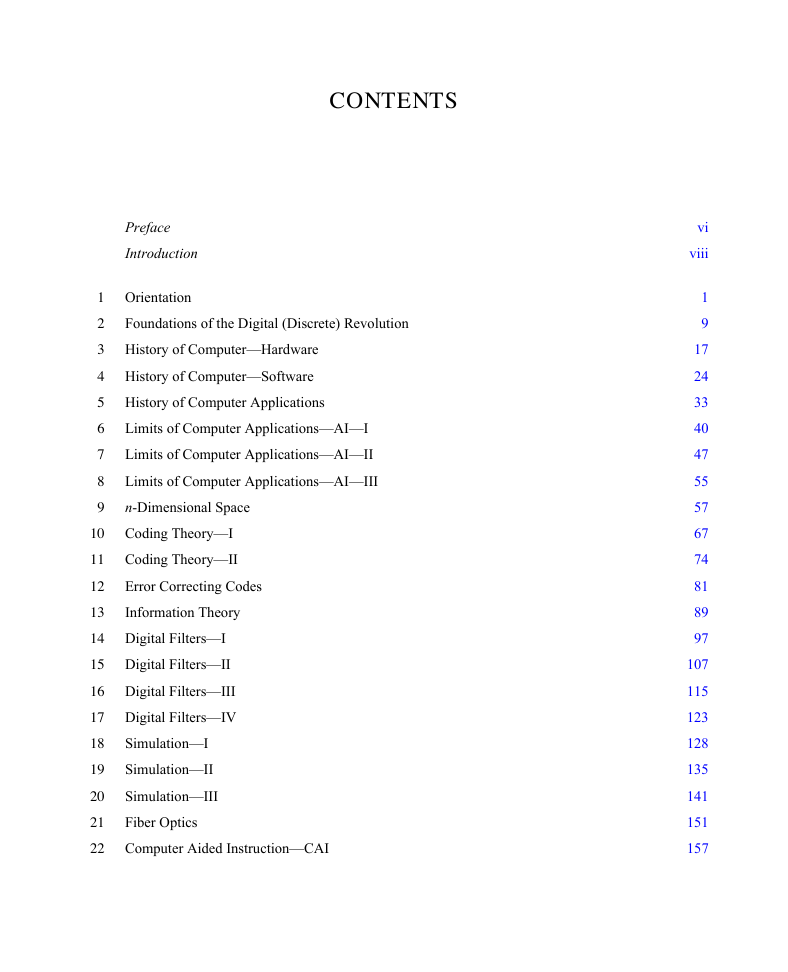
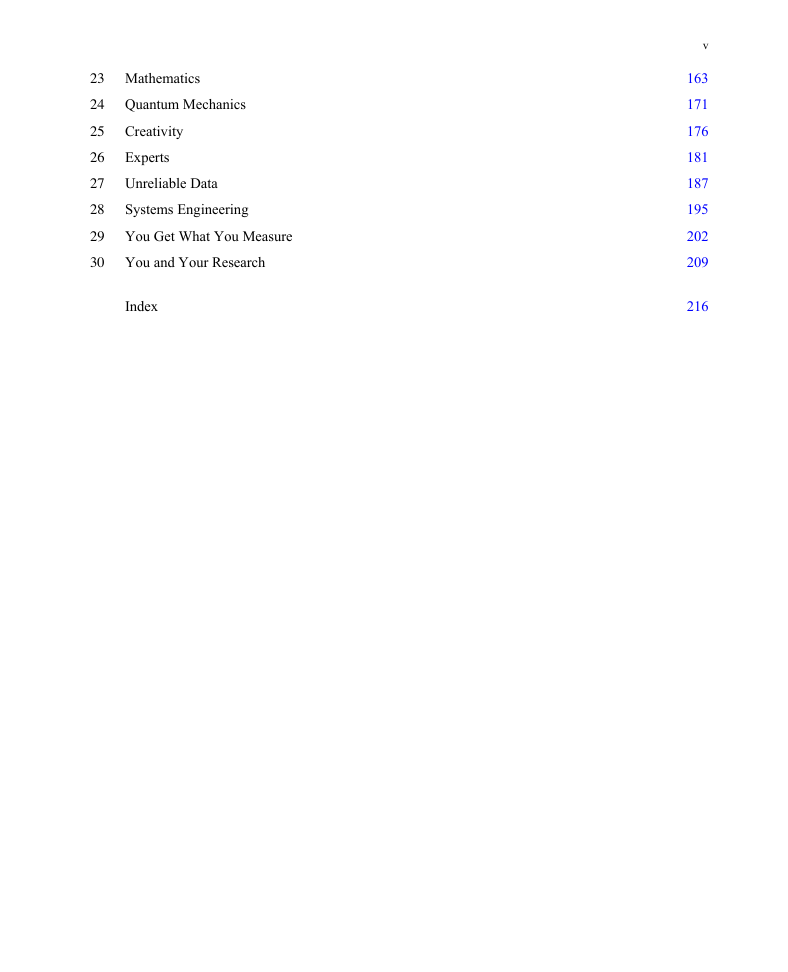
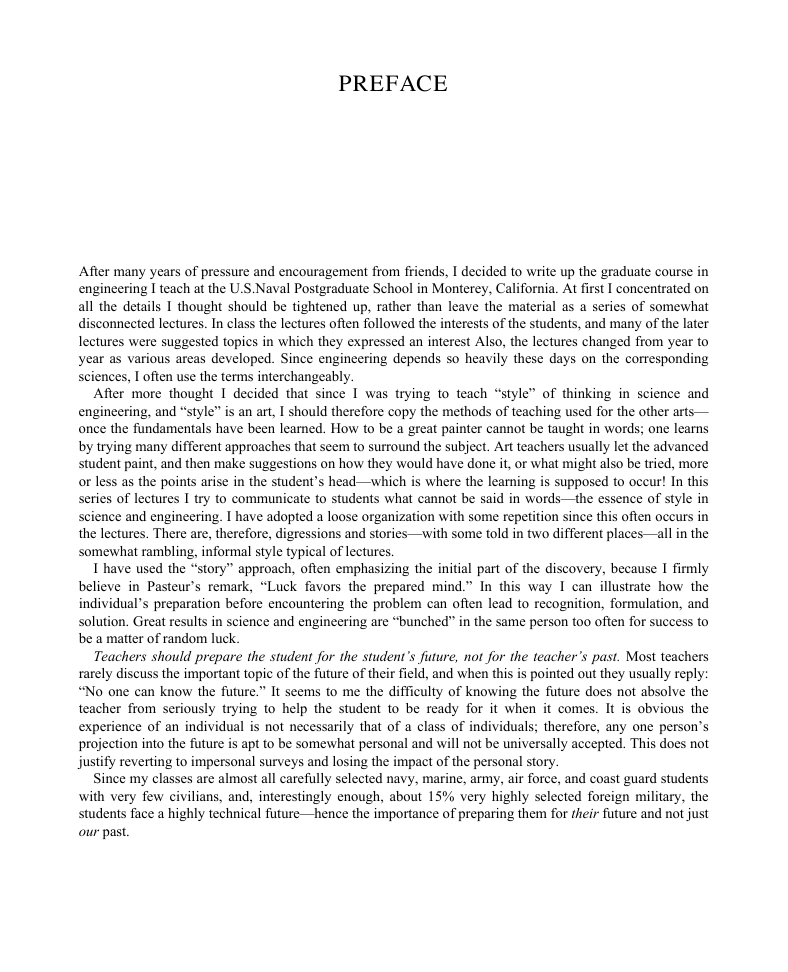









 2023年江西萍乡中考道德与法治真题及答案.doc
2023年江西萍乡中考道德与法治真题及答案.doc 2012年重庆南川中考生物真题及答案.doc
2012年重庆南川中考生物真题及答案.doc 2013年江西师范大学地理学综合及文艺理论基础考研真题.doc
2013年江西师范大学地理学综合及文艺理论基础考研真题.doc 2020年四川甘孜小升初语文真题及答案I卷.doc
2020年四川甘孜小升初语文真题及答案I卷.doc 2020年注册岩土工程师专业基础考试真题及答案.doc
2020年注册岩土工程师专业基础考试真题及答案.doc 2023-2024学年福建省厦门市九年级上学期数学月考试题及答案.doc
2023-2024学年福建省厦门市九年级上学期数学月考试题及答案.doc 2021-2022学年辽宁省沈阳市大东区九年级上学期语文期末试题及答案.doc
2021-2022学年辽宁省沈阳市大东区九年级上学期语文期末试题及答案.doc 2022-2023学年北京东城区初三第一学期物理期末试卷及答案.doc
2022-2023学年北京东城区初三第一学期物理期末试卷及答案.doc 2018上半年江西教师资格初中地理学科知识与教学能力真题及答案.doc
2018上半年江西教师资格初中地理学科知识与教学能力真题及答案.doc 2012年河北国家公务员申论考试真题及答案-省级.doc
2012年河北国家公务员申论考试真题及答案-省级.doc 2020-2021学年江苏省扬州市江都区邵樊片九年级上学期数学第一次质量检测试题及答案.doc
2020-2021学年江苏省扬州市江都区邵樊片九年级上学期数学第一次质量检测试题及答案.doc 2022下半年黑龙江教师资格证中学综合素质真题及答案.doc
2022下半年黑龙江教师资格证中学综合素质真题及答案.doc